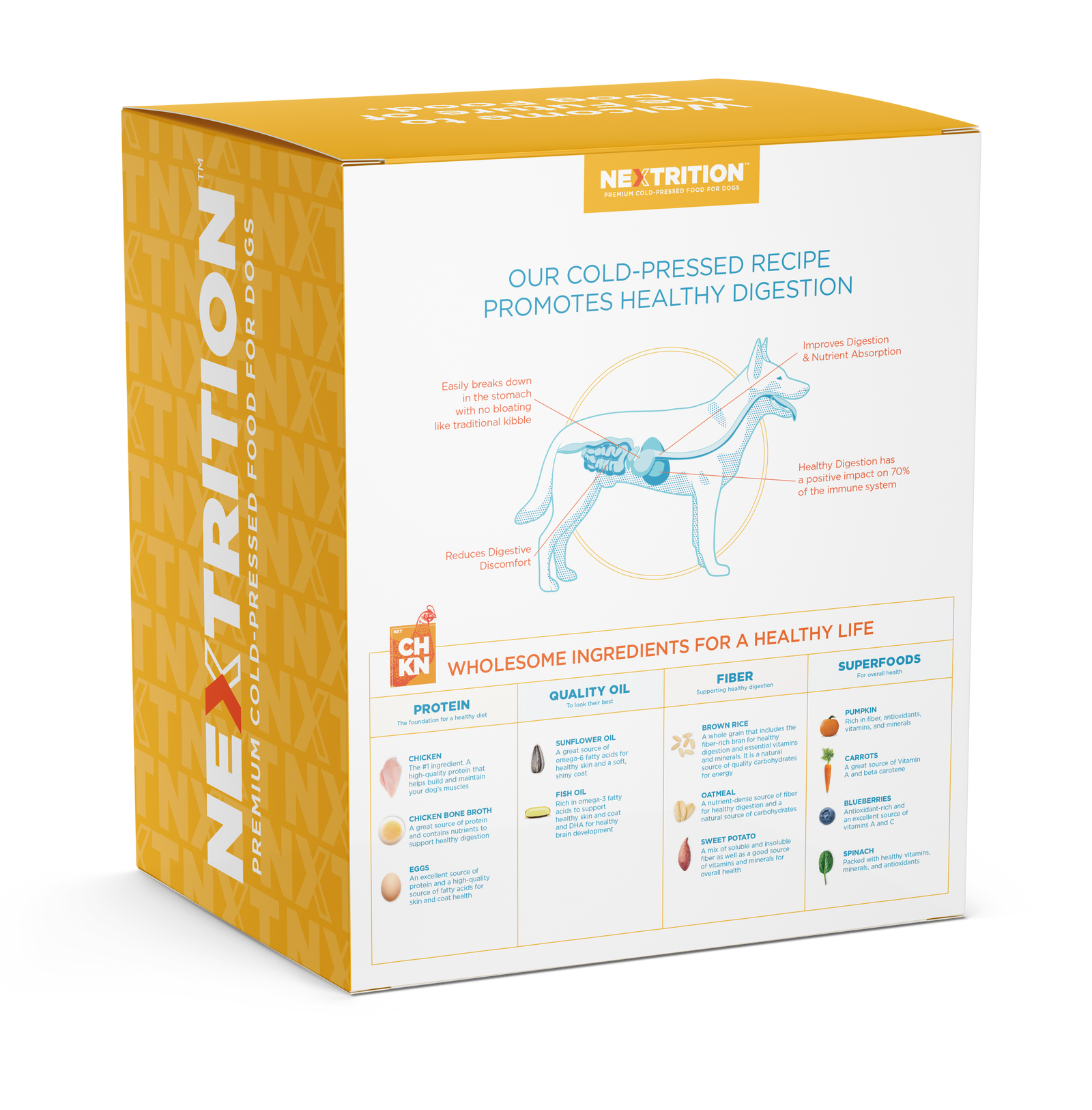Reading dog food labels and claims can sometimes feel like rocket science. There can be unfamiliar ingredients, percentages, nutritional claims, and other technical information that you need to decipher.
But that’s why we’re here! In this article, we will demystify dog food labels and common marketing claims to help you understand what’s good for your dog and what kind of unnecessary marketing jargon you should avoid.
In short, we’ll take you from a label-reading novice to a bona fide expert! But before that, let’s start by understanding how dog food labels are created and monitored and who sets the standards for labeling.

Minimum Nutrition Requirements Established by AAFCO
The Association of American Feed Control Officials, or AAFCO, is a non-profit organization that has set various standards and regulations regarding the production, labeling, and sale of both animal feed and pet food in the United States.
They have established minimum nutrition requirements for pet food to ensure that it contains all the necessary nutrients for specific life stages of the animal. You might have seen an AAFCO statement on your pet food packaging.
The presence of an AAFCO statement on the label indicates that your dog’s food meets the minimum nutrient requirements for a particular life stage. It also gives pet owners an assurance that the ingredient list, nutritional content, and other claims mentioned on the food label are accurate.
Now, you should note that AAFCO has no regulatory authority. It’s the FDA that regulates the pet food industry by monitoring food labeling, conducting inspections, and enforcing product recalls if necessary.
However, even the FDA states that to be "complete and balanced," dog food must meet one of the Dog Food Nutrient Profiles established by AAFCO.
Understanding the Product/Recipe Name
Many dog food labels have ingredients mentioned in the product name, for example, chicken dog food or lamb dog food. To ensure these product names aren’t false or misleading, AAFCO has set certain rules that are as follows:
The 100% Rule
If a product name says “all-chicken jerky dog treats,” then the product must be all-chicken meat. But with the exception of any water content (added for processing), decharacterizing agents, and trace amounts of preservatives and condiments (added for processing and product stability).
Since this criteria is extremely strict, it’s unlikely that any dog food product, except treats, will meet this requirement.
The 95% Rule
This rule applies to products that contain the name of a food ingredient, such as “chicken dog food” or “beef dog food.” It states that the ingredients listed in the product name must contain at least 95% of the product by weight, excluding added water.
The remaining 5% can include vitamins, minerals, and other ingredients added for nutritional purposes or product processing.
The 25% Rule
If the product name contains additional descriptors, such as “dinner,” “entrée,” “recipe,” “formula,” etc., then the ingredients in the product name should contain 25% of the product by weight, excluding added water.
However, the recipe name can split the 25% rule between ingredients as long as each ingredient is at least 3% of the recipe and together the ingredients are at least 25%. For example, a product named “chicken, rice, and apple formula” could contain 12% chicken, 11% rice, and 3% apple.
This rule doesn't require the largest ingredient to be included in the recipe name. From the last example, the recipe could also contain 20% corn, more than any of the other individual ingredients, and not be required to be listed in the recipe name.
However, recipes that only contain 1 ingredient, such as “Chicken recipe,” will have at least 25% chicken. Thus, the fewer ingredients listed in the recipe name usually means it’s more premium.
The “With” Rule
If the product name contains the word “with,” it means that the product contains at least 3% of the named ingredients. For example, “Pawsome dog food with salmon and rice” must contain at least 3% salmon and 3% rice.
The Flavor Rule
A product can use a flavor designation in its name or label when there is less than 3% of that ingredient in the recipe. For example, “beef flavored dog food” must contain some ingredient that provides beef flavor.
A Fanciful Recipe Name
A product can avoid putting ingredients in the recipe name and give it a fanciful name, such as "Yellowstone Park Recipe." There are no rules or requirements established by AAFCO or the FDA in order to use a fanciful recipe name as long as it continues to meet the minimum nutritional standard.

How to Read a Dog Food Label?
Now that we have discussed a few basic rules, let’s get to actually reading and understanding dog food labels, specifically the ingredient list and the guaranteed analysis. To get started, you should understand some key components, such as:
1. Various types of ingredients
Dog food is almost always made with multiple ingredients, and you’ll find them all listed on the package of your dog food and on the brand’s website. Some of the most common categories of ingredients you’ll find include:
1.1 Animal protein
These are the main protein sources and the foundation of any good diet for dogs. The best option, however, is meat labeled with a specific type, such as chicken, salmon, or lamb. This indicates that the meat originated as whole-muscle meat and underwent processing like chopping, cooking, etc. This also makes it the most expensive option.
The next step down is “meat meal.” You’ll find this on the label as “chicken meal,” “salmon meal,” etc. This meal is typically a combination of muscle meat, organ meat, and potentially some bone that has been cooked, dried, and ground. It’s a good option because of the combination of muscle meat and other animal parts providing various nutrients from the animal. However, the ratio of these parts in the meat meal can vary as long as the total nutrients are fairly consistent between batches.
The two lowest levels are “by-products,” which is a catch-all for whatever parts of the animal the renderer wants to/can include, and “meat & bone meal,” which could contain pieces of a variety of animals that were either healthy or sick. These two are usually the least expensive animal protein options and are often avoided by pet owners who shop for more premium foods.
1.2 Grains
Despite what some pet food companies would want you to believe, dogs are omnivores, not carnivores. They are able to effectively eat and digest protein and grains, which provide carbohydrates and fiber. However, some grains are better for dogs than others.
For example, grains like oats, barley, sorghum, and brown rice are healthy and nutrient-dense. Whereas grains like corn, wheat, and soy have low nutritional value and are often used as an inexpensive filler in dog food.

1.3 Fruits and Vegetables
Fruits and vegetables like carrots, apples, blueberries, spinach, etc., are safe and healthy for a dog. If you come across these ingredients listed on a dog food label, it would be considered a good sign as they contain natural antioxidants, vitamins, and minerals.
1.4 Fats and Oils
You can also find various fats and oils listed on your dog food label, such as “chicken fat,” “fish oil,” “flaxseed oil,” etc. They are added to enhance the flavor of the food, provide more energy to your dog, and support skin and coat health.
1.5 Supplements and Additives
Dog food also contains various supplements like vitamins, minerals, antioxidants, prebiotics, or probiotics to enhance its nutritional profile and support your dog’s overall health.
1.6 Prebiotics and Probiotics
Probiotics are the living strains of good bacteria that contribute to a healthy gut, which may not currently exist in the gut. And prebiotics are fuel for good bacteria that already exist in the gut. If they’re added to your dog’s food, you should be able to find them mentioned on the packaging.
1.7 Flavorings and Preservatives
Dog food can also contain artificial flavorings to enhance palatability and preservatives to maintain freshness and prevent spoilage.
2. Order of listed ingredients
According to AAFCO, the dog food label must list the ingredients in descending order based on their weight. This means the first ingredient on the list should account for the most weight in a product. Premium foods are usually a source of animal protein, like chicken or beef.
But you need to be mindful of a few things here:
- If 2 or more ingredients are included at the same percentage, the brand can choose which one to put higher or lower on the list. For example, if a recipe contains 10% chicken, 10% rice, 10% potatoes, and 10% oats, you might see Chicken as the #1 ingredient even though it is only 10% while the other 3 ingredients are included at the same amount.
- The ingredients in your dog food are weighed before processing, which means that their weight may contain water content. Therefore, ingredients with higher water content, such as raw meats, would weigh more before cooking and can be listed higher on the ingredient list than the weight after cooking.

3. Same ingredients with different names
It is not uncommon for some dog food brands to use different names for similar ingredients on food labels. This is done for various reasons, such as market or regional preferences, different processing methods, or for marketing purposes.
Some manufacturers go even further by dividing a single ingredient and listing different names of the smaller components. This is a deceptive technique known as ingredient splitting. It’s usually done for less favorable ingredients with the intention of pushing these ingredients down the list and creating the impression that they are less significant in the recipe.
For example, sugar is a less favorable ingredient in dog food and treats. A brand can divide this ingredient into various forms, such as high-fructose corn syrup, honey, molasses, agave, cane sugar, brown sugar, etc. So if in a recipe, the sugar content is 30% and real meat is 15%, a brand can split sugar into 10% honey, 10% agave, and 10% high-fructose corn syrup. This would allow Chicken to be claimed and listed as the #1 ingredient.
This can be highly misleading when you’re trying to make informed decisions about the nutritional content of your dog’s food. Thus, you should be aware of ingredient splitting, don’t put lots of weight on the #1 ingredient claims, and read the first 5 ingredients in any recipe as that is a more accurate picture of the quality of the pet food or treat.
4. Nutritional facts and the serving size
There is a lot of information you can find on a dog food label to understand the nutritional content and the serving sizes. Firstly, it’s important to look for an AAFCO statement that will ensure the food is indeed “complete and balanced” for your dog's specific life stage.
It is worth noting that AAFCO sets the minimum nutritional requirements for dog food but doesn’t set an ideal standard. Most premium dog foods will exceed the minimum requirements but can leverage nutritional trends and marketing to imply their food is more nutritious than others.
You can also examine the Guaranteed Analysis, a list that highlights the minimum percentage of crude protein and crude fat and the maximum percentage of fiber and moisture present in the food. Depending on the brand, this list can also include information about other nutrients, such as:
- Vitamins & minerals: You might see various essential vitamins and minerals added to the food. These help in making the food more nutritious and promoting the overall health of your dog.
- Antioxidants: Certain dog food labels mention the presence of antioxidants like vitamin C or vitamin E.
- Fatty Acids: Some brands can also provide information about the omega-3 and omega-6 fatty acids present in the food.
Sometimes, the tricky part can be figuring out the serving sizes for your dog. Even though there is a chart of recommended feeding amounts printed on the package based on weight, it’s usually a general recommendation because it doesn’t account for your dog's lifestyle, health, and activity level.
You can consider consulting with a veterinarian to understand your dog’s nutritional needs and the portion sizes of their daily meals.

5. Allergen information and potential sensitivities
Some brands include explicit allergen warnings on their dog food label. You might see terms like “contains wheat,” “contains soy,” or “processed in a facility that handles nuts." These warnings are helpful for pet owners who have dogs with allergies or food sensitivities.
But if in case the label doesn’t specify the allergens, you can scrutinize the ingredient list to identify any potential triggers.
Summing Up: Dog Food Labels
As a pet parent, you should be well-versed in reading dog food labels and marketing claims to understand what’s best for your dog’s health. The more important things you can do is examine the ingredient lists (giving priority to the top 5 ingredients), look for an AAFCO nutritional adequacy statement, and read the Guaranteed Analysis. At the same time, it’s equally important to remain cautious of misleading statements and claims that are used as marketing tactics to attract customers.
It would be hard work at first, but once you understand how to read dog food labels, you can make informed choices about your dog's health and wellness.

FAQs
1. What needs to be on a dog food label?
The regulation of pet food labels is overseen by both the FDA and AAFCO. While the FDA regulates the labeling of pet food products, AAFCO provides guidelines and standards for the labeling. As per their combined guidelines, a dog food label must contain:
- Brand name and product name
- Species for whom it is intended
- Net weight
- Name and address of the manufacturer
- Ingredients list
- Nutritional Adequacy Statement
- Guaranteed Analysis
- Feeding directions
- The best before date
2. What is the 95% rule for dog food?
This rule states that products that contain the name of a food ingredient, such as “chicken dog food,” should contain at least 95% of the product by weight, excluding added water.
The remaining 5% can include vitamins, minerals, and other ingredients added for nutritional purposes or product processing.
3. What is the 100% rule for dog food?
This rule states that product names that say something like “all-chicken jerky dog treats” must be all-chicken meat. But with the exception of any water content (added for processing), decharacterizing agents, and trace amounts of preservatives and condiments (added for processing and product stability).
You should note that this criterion is extremely strict, and it’s unlikely for any dog food product, except treats, to meet this requirement.
4. What is the 25% rule for dog food?
If the product name contains additional descriptors, such as “dinner” or “formula,” then the ingredients in the product name should contain at least 25% of the total product weight, excluding added water.
However, the recipe name can split the 25% rule between ingredients as long as each ingredient is at least 3% of the recipe and together the ingredients are at least 25%. For example, a product named “chicken, rice, and apple formula” could contain 12% chicken, 11% rice, and 3% apple.
5. What are the 4 required label items on pet food products?
The 4 most important items that should be included on a pet food label are the product & brand name, net weight, ingredients list, and a Guaranteed Analysis.
Sources:
https://www.aafco.org/consumers/understanding-pet-food/reading-labels/
https://www.akc.org/expert-advice/nutrition/how-to-read-a-dog-food-label/
https://www.fda.gov/animal-veterinary/animal-health-literacy/complete-and-balanced-pet-food





